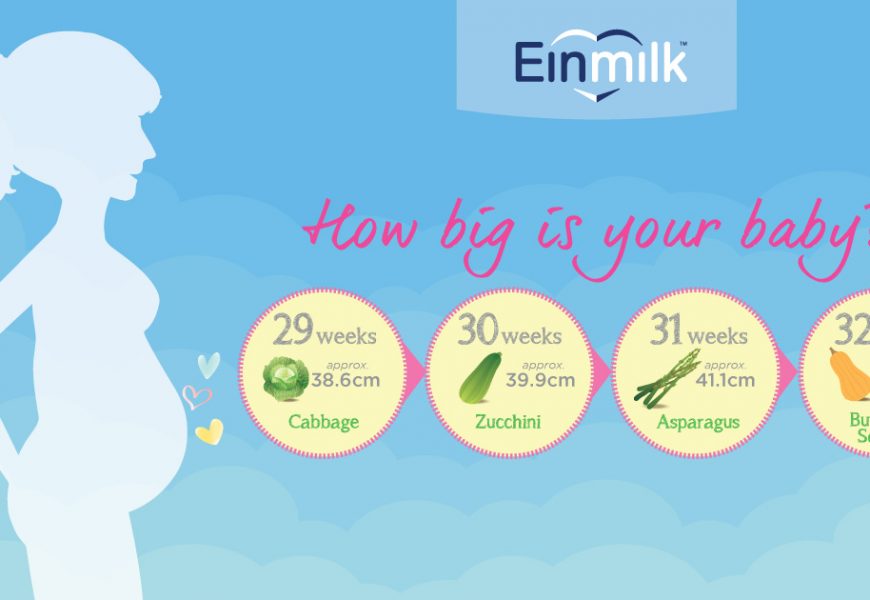Welcome to the third trimester! In this last lap of pregnancy, one of the symptoms that may return is fatigue. This happens when your body grows larger and makes sleeping difficult. Losing balance and feeling clumsy is something many pregnant mums in their last trimester experience as well as the centre of gravity moves forward. Maintaining good health and continuing with a nutritious diet during pregnancy is important because immunity can be passed onto your baby.

Nesting instincts commonly kick in during the third trimester of pregnancy, and mummies start preparing for the arrival of your new baby.
Week 29: Cabbage
Your little one is about the size of a cabbage, measuring about 38cm in length and 1.1kg in weight. At this point, things are getting a little cramped inside, but you should be able to feel your baby’s movement. Your gynaecologist will also teach you how to count fetal movements such as jabs, kicks or hiccups so that you can monitor your baby’s well-being. If your baby has less than 10 movements per day for two consecutive days, alert your doctor immediately.
You could possibly experience exponential weight gain as your baby fattens up before meeting the world. If you have been diagnosed with gestational diabetes,managing the condition is important to prevent pregnancy complications.
Week 30: Zucchini
At 30 weeks, your baby’s brain is growing rapidly, developing wrinkles and grooves on its smooth surface. The reason for the wrinkles is to increase the amount of brain tissue to allow your baby to prepare for life outside the womb.
Red blood cells that were once produced by the spleen and tissue groups are now being produced by your baby’s bone marrow. Your baby’s eyes can now open wide too!
Though you might feel bloated and exercising may be the last thing on your mind, keeping active throughout pregnancy could help your labour process as oxygen-rich blood courses through your body during exercise. You don’t even have to go to the gym to exercise!

During the third trimester of pregnancy, it’s also a good time to start planning for baby care after baby is here, or after your maternity leave is over.
Week 31: Asparagus
Your baby’s brain can be likened to a computer, and this computer is hard at work making billions of connections between individual nerve cells. His brain is able to process information and track light from his senses. He won’t be able to smell outside scents when he is still enclosed in the womb, but once he is out, he will be able to breathe and process the scents and stenches in this world.
Babies at this age have been seen making faces, hiccuping, swallowing and sucking their thumbs in the womb via ultrasound. Thumb sucking will remain a source of comfort for infants and young children.
Some common pains and aches at this late stage of pregnancy include water retention, swelling (edema) and leg cramps. As contradicting as it sounds, drinking more water actually helps to relieve water retention and flush out toxins.
Week 32: Butternut Squash
Your baby’s toenails are now visible, 32 weeks into your pregnancy. The lanugo, or soft hairy skin covering, will start to shed off to reveal your baby’s smooth skin. His skin is now more opaque as fat builds up beneath it. Your baby is now practising how to breathe by inhaling amniotic fluid.
As your bump expands, you may experience more itching and stretch marks that can be managed by applying moisturiser liberally to soothe the skin. If you’re feeling miserable waiting out these last few weeks, why not pamper yourself with some retail therapy? Maternity wear has evolved to become chic, versatile pieces that can be worn throughout breastfeeding and even as normal casual and workwear.
How are you coping with being heavily pregnant during your third trimester? Let us know in the comments!

